There is a lot of coming and going at the southern “gate” of Gellért Hill: aptly named Verejtéj Slope (verejték meaning sweat sin Hungarian – the ed.). One by one, couples and families, Hungarians and foreigners, head to one of the largest parks in Budapest, first to Kelen Hill and then Gellért Hill, which was once known as Blocksberger due to the Turkish fortifications constructed atop of it during the Ottoman Era.
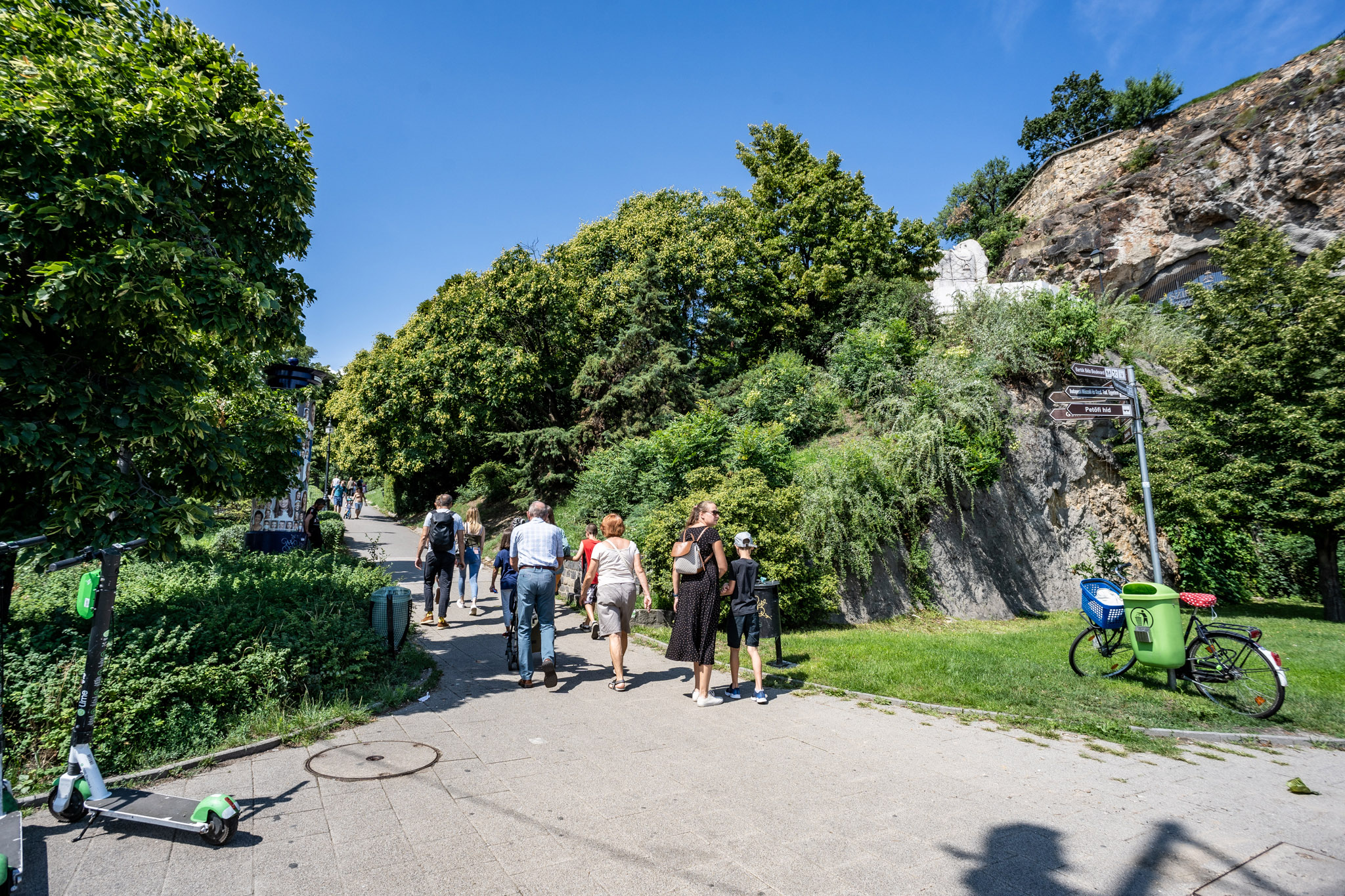
Many visitors approach Gellért Hill from Verejték Slope. The electric scooters scattered all over the city can also be found here (Photo: Balázs/Pestbuda)
Gellert Hill has been an integral part of life in Buda (and of course Pest) since the earliest days of humans living in the area: according to the finds, the Celts were the first to live on its southern slopes. Later, according to legend, the first Bishop of Hungary, Saint Gerard (Gellért in Hungarian), was rolled off the hill in a barrel, then it was fortified by the Ottomans, later an observatory was built, and after the 1848 revolution, a fortress was erected once again (the latter is the Citadel visible to the present day). However, it only became a popular park towards the end of the 18th century. And has remained one ever since.
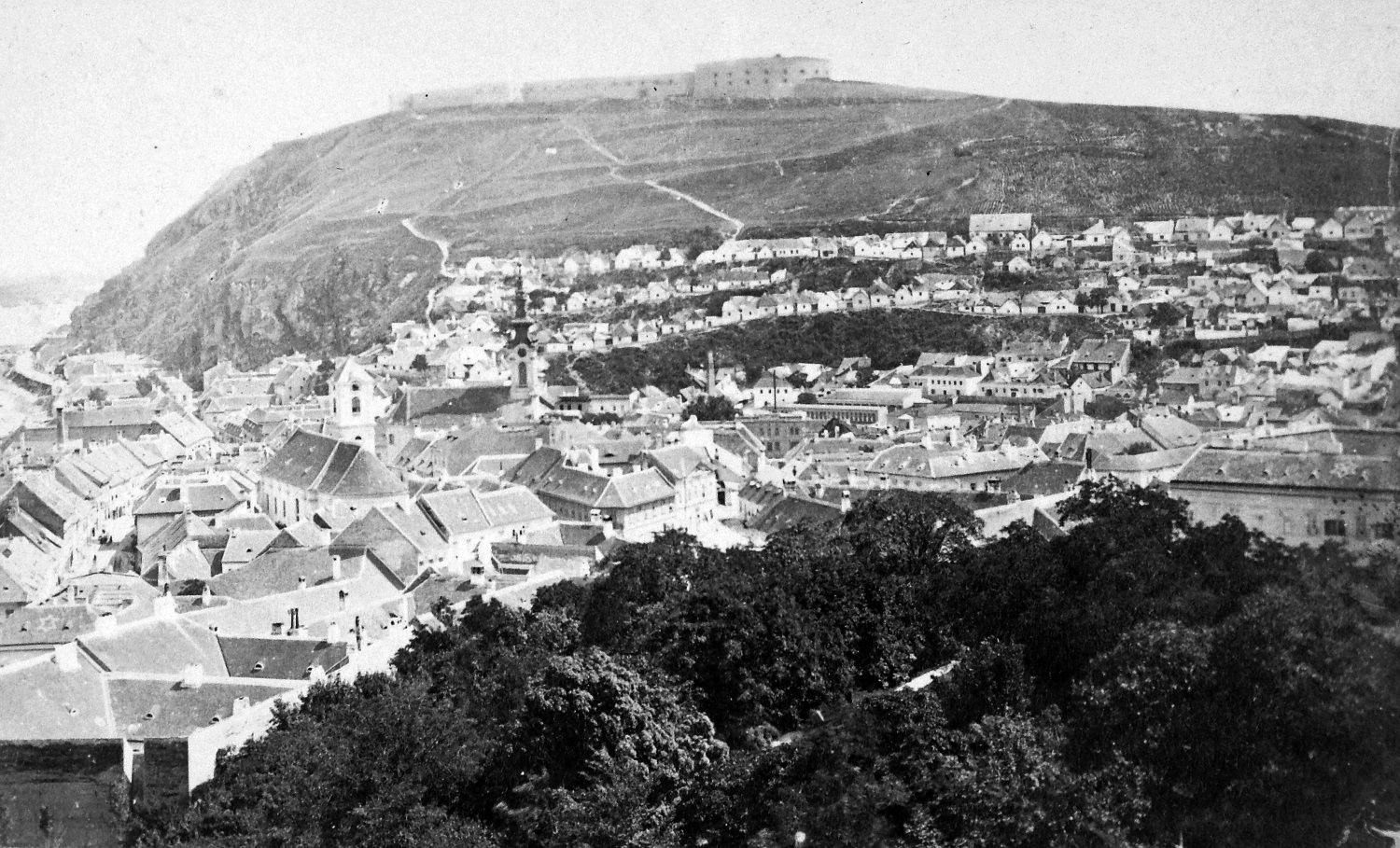
The surprisingly barren Gellert Hill around 1872, on the slope houses of Tabán (Photo: Fortepan/No.: 15109)
Food shop in the corner
This can also be seen on the scorching summer morning when we climb Verejték Slope to see how this popular destination and World Heritage Site fares today.
Life is bustling on Verejték Slope: hikers are as enthusiastic as the vendors who have set up shop in turn on the path leading to Cave Church. Visitors can buy pretzels, soft drinks, tablecloths embroidered with folk motifs and bags of lavender. Many people are already resting here and walking out to the small lookout terrace in front of the chapel to take a selfie with the Saint Stephen statue by Pál Kő with Szabadság Bridge in the background.
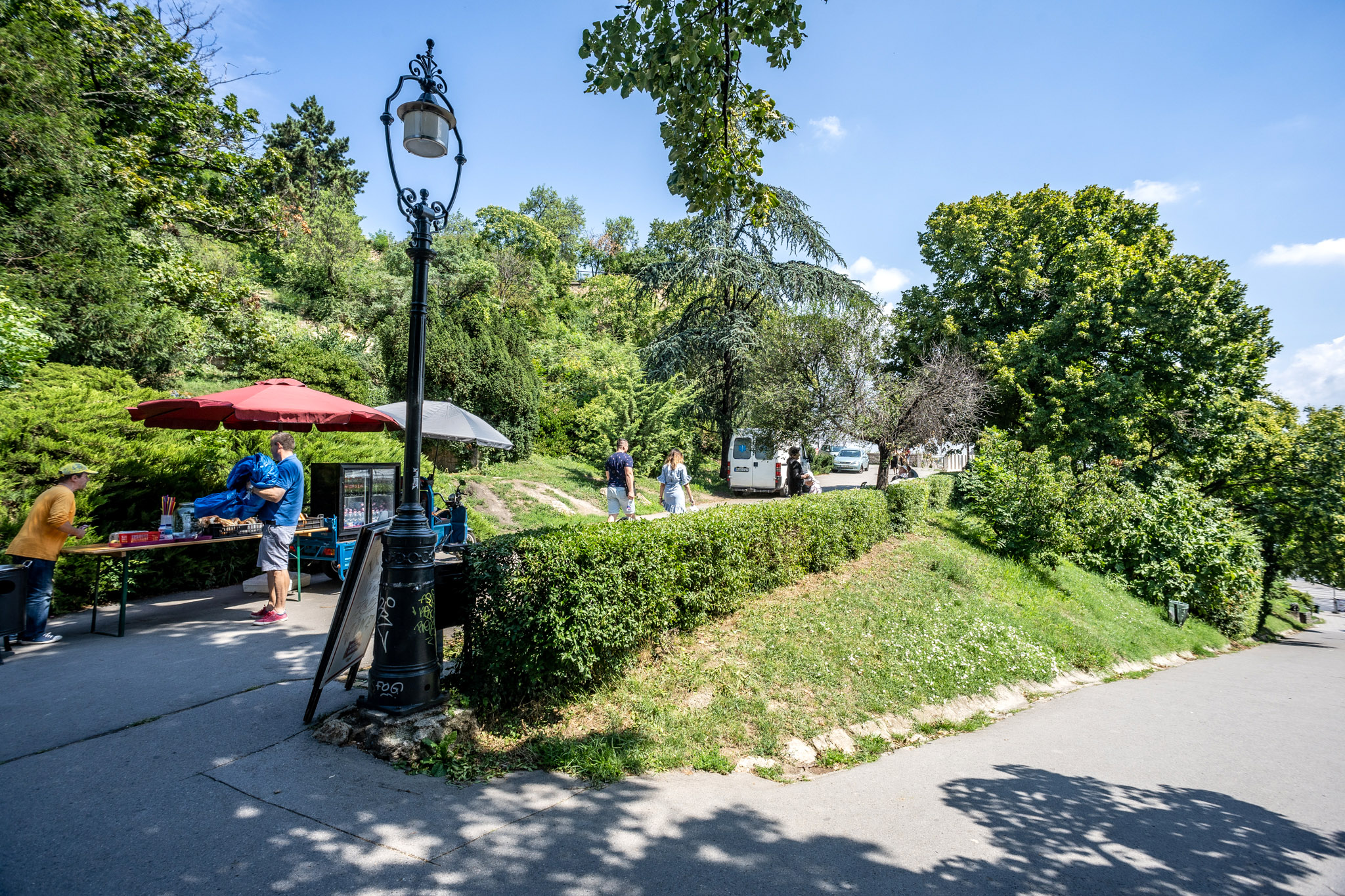 The road turns towards the Rock Church (Photo: Balázs Both/Pestbuda)
The road turns towards the Rock Church (Photo: Balázs Both/Pestbuda)
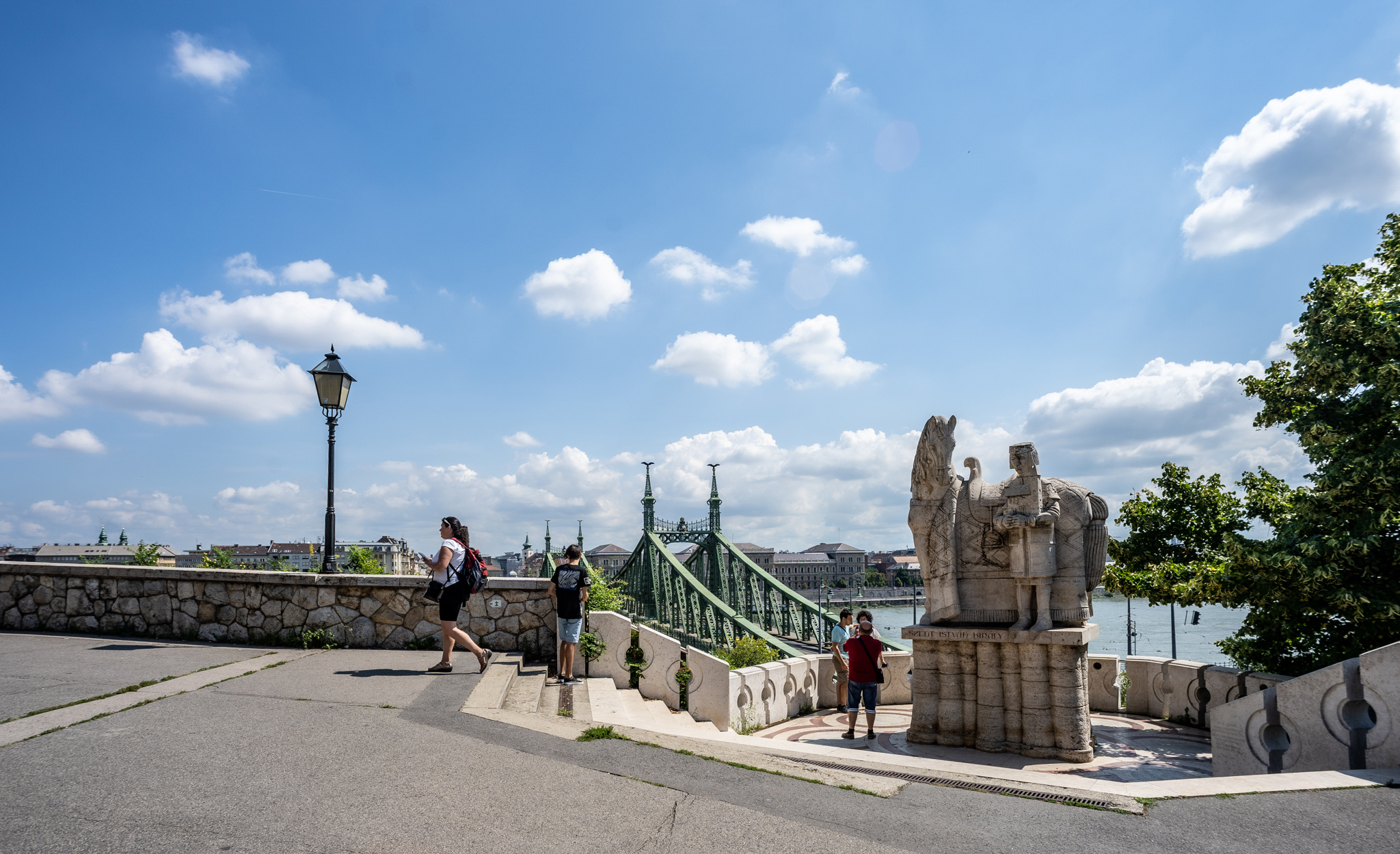
View from the terrace in front of the Rock Church: opposite the statue of Saint Stephen, 2001 by Pál Kő (Photo: Balázs Both/Pestbuda)
Many also visit the Rock Chapel: the unusual chapel is housed in a natural cave formation. A large block of concrete to the right of the entrance (in an undeservedly hidden place) reminds us of the two-meter-thick concrete wall that closed the entrance during communism and the last piece of which was demolished in 1992 when the karst-water monitoring station was transformed back into a chapel.

The entrance to the Rock Chapel was closed with a two-meter concrete wall in communism, a concrete block left in the corner on the right edge of the current entrance is reminiscent of this era (Photo: Balázs Both/Pestbuda)
The slide playground is a children's favourite
Continuing up Verejték Slope, children's cries can be heard: we are approaching the slide playground, which – since its renovation in 2017 – is one of the most wonderful places for children in Budapest. In fact, even parents enjoy their time here. The whole area is covered with a special rubber paving, and thanks to the shady trees and the drinking fountain, the summer heat is more bearable. During our visit, children were standing in line to have a go on a slide.

Many families only go to Gellert Hill because of the slide playground renovated in 2017, the upper areas are less popular (Photo: Balázs Both/Pestbuda)
Climbing further, the road leads along Verejték Street. As elsewhere, the pavement is covered with asphalt: this simple, unassuming, ugly and quickly warming pavement is the least fitting in a nature reserve. But at least most of it is in one piece here. The same cannot be said for the footpaths further up the hill. The red concrete benches along the path are well known to Hungarian but uncomfortable, and people using them are twisted into strange sitting positions as we climb. Despite the generally run-down area, reading and chatting in the shade is a lovely pastime, even if the benches are uncomfortable.
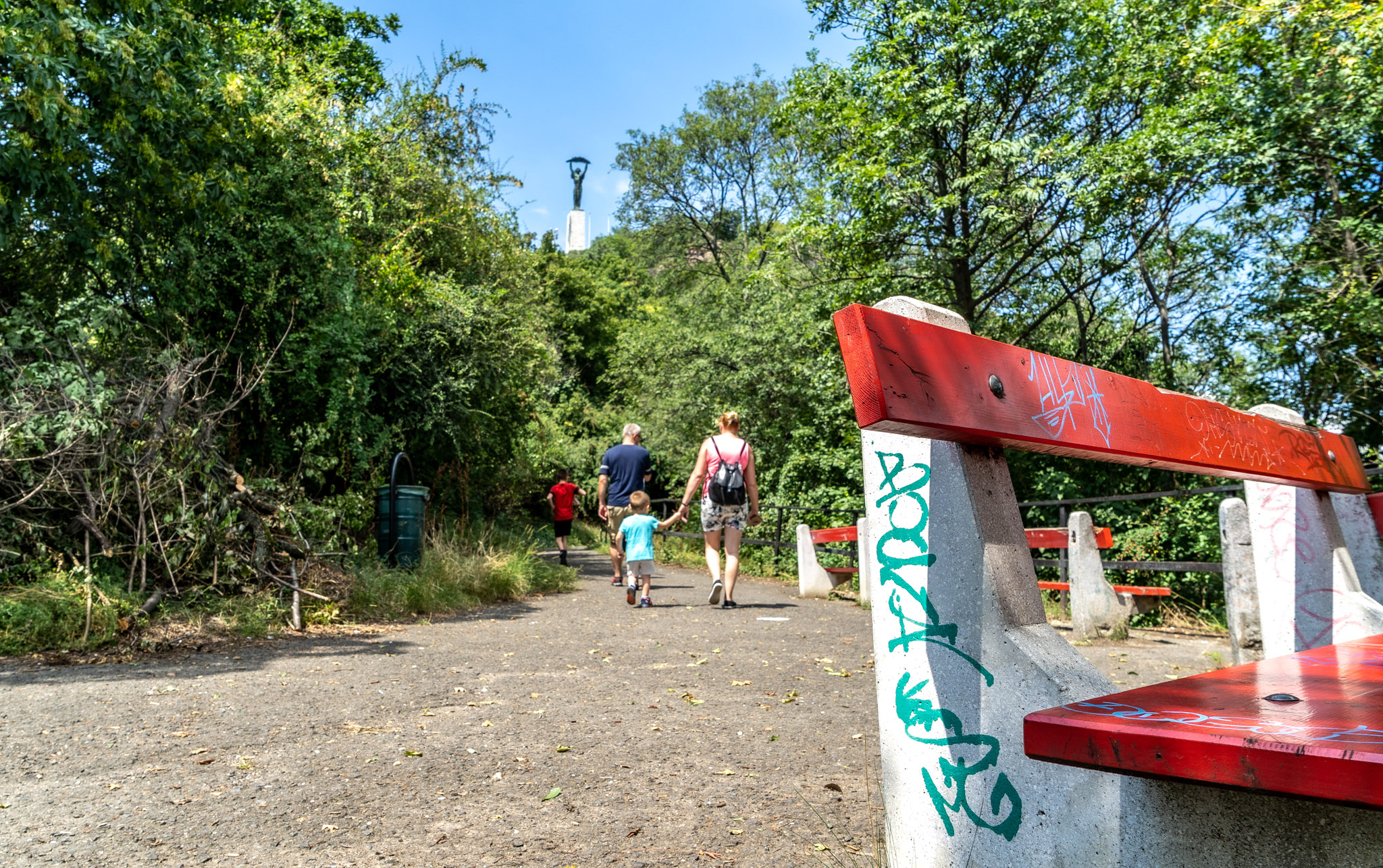
Gellérhegy: the legendary uncomfortable red concrete benches, next to them piles of green waste and graffiti (Photo: Balázs Both/Pestbuda)
Is this really a nature reserve?
Not everyone knows and admits that most of Gellert Hill has been part of the Danube-Ipoly National Park as a nature reserve since 1997: walking on the hill, it wouldn't even occur to us, despite a well-worn sign along one of the roads. The diversity of plants tends to seem careless, and overall, the piles of green waste that have been cut and left behind do not help either.
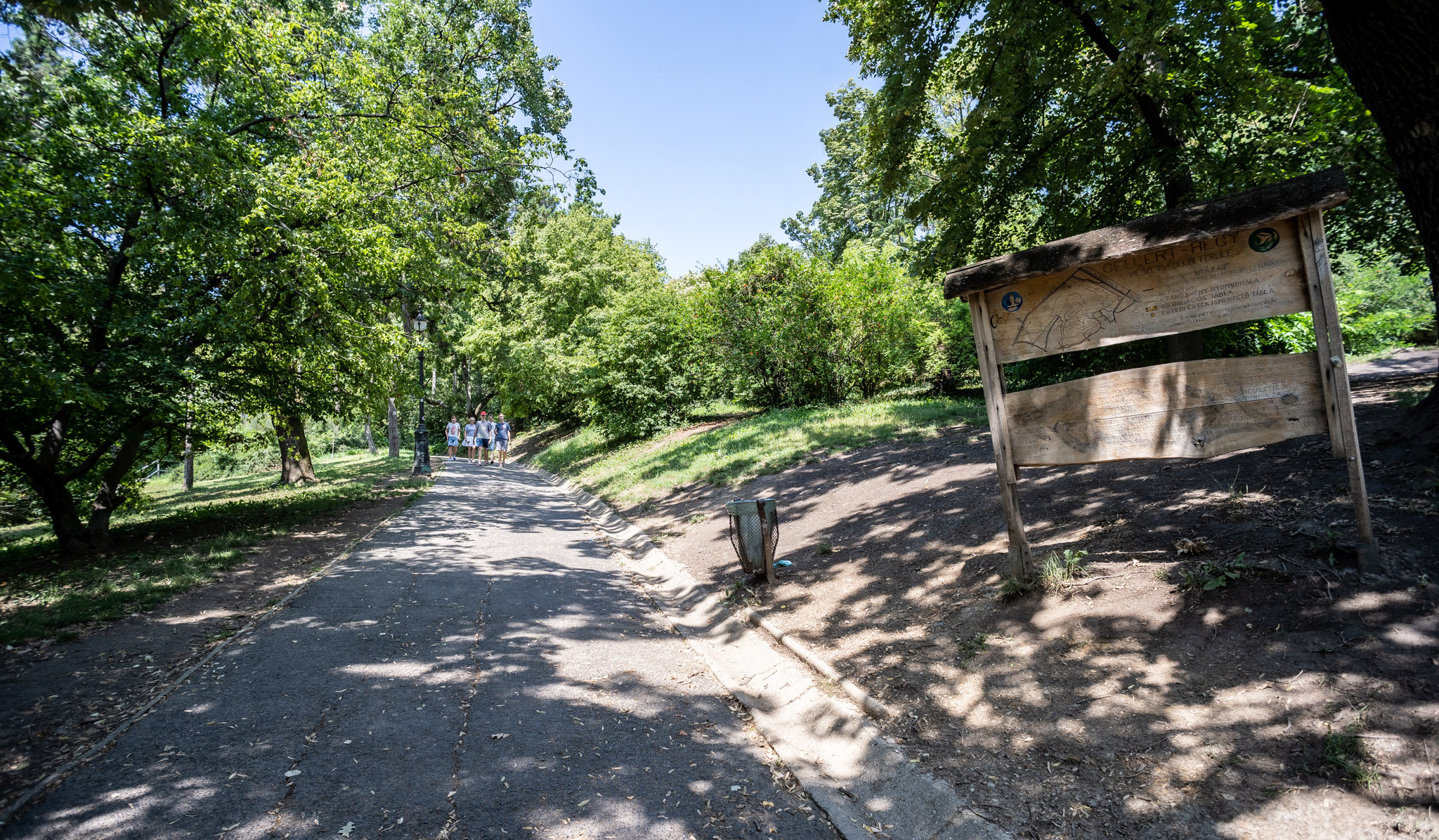
The barely legible wooden sign tells visitors they are entering a protected area (Photo: Balázs Both/Pestbuda)
Rubbish is everywhere on the hillside: used tissues, chocolate wrappers, water bottles, and plastic blags roll and fly in the wind. The pizza boxes, metal caps and discarded butts suggest that there are those for whom life on Gellért Hill begins after sunset. This is mainly due to the secluded nooks, many of which are formed by the rocky surface of the hill and the overgrown vegetation.
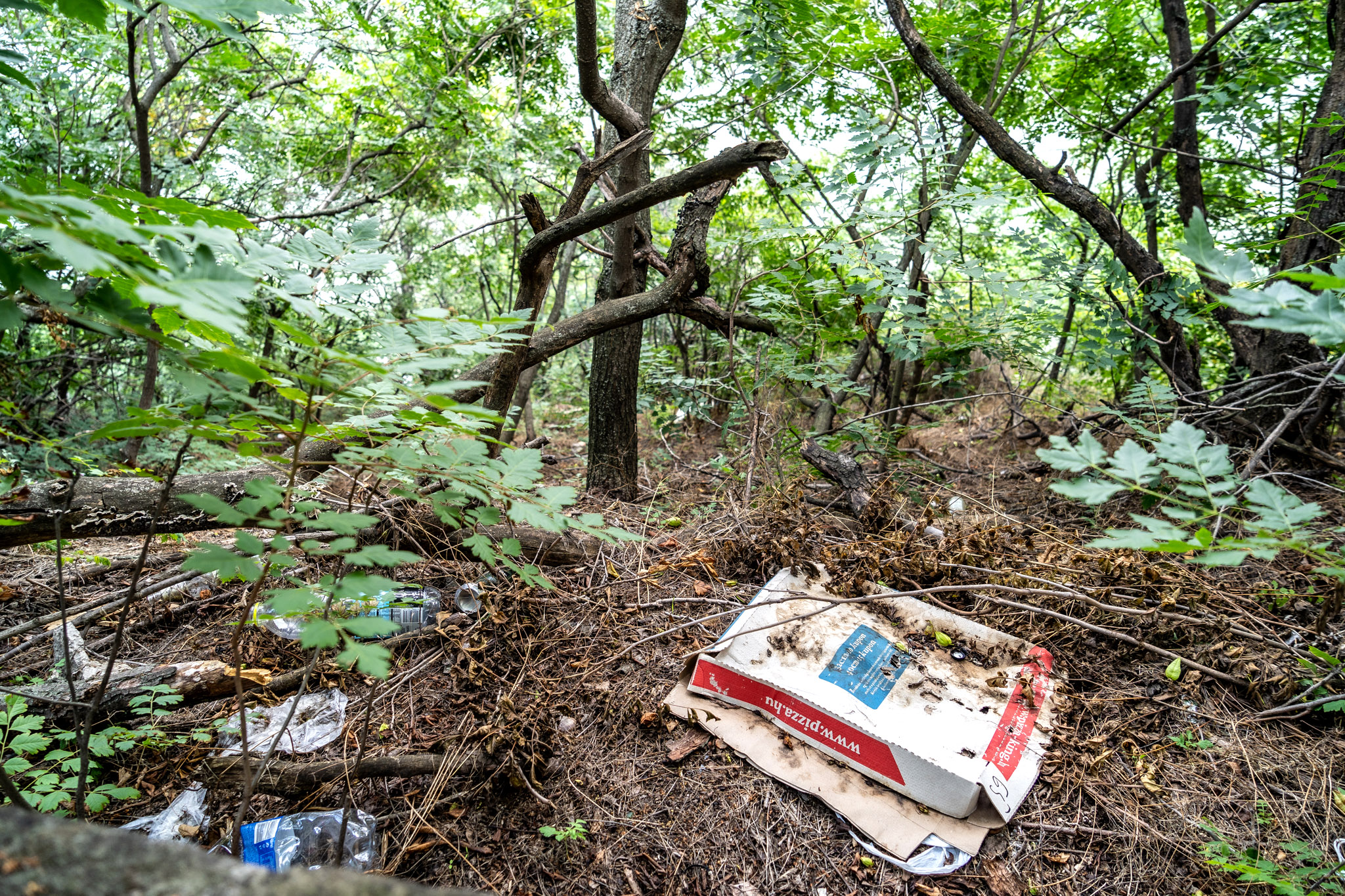
A sadly common sight on the hillside (Photo: Balázs Both/Pestbuda)
Grafitti is also common on Gellert Hill: countless lampposts, railings, and boulders bear the traces of those who like to signal their visit with irresponsible and damaging tags. It seems only trees are spared from the airbrushes (hopefully, this will remain the case).

Walking off the main paths, one quickly finds themselves alone. There is much more graffiti in the hidden parts, but unfortunately, it is not uncommon elsewhere (Photo: Balázs Both/Pestbuda)
A few steps from the crowd, anyone can have their own terrace
The hustle and bustle of the day is mainly limited to the area around the attractions (slide playground, Citadel), with much more pedestrian traffic on the major footpaths leading to them than elsewhere. Most of the viewpoints along the main paths will be popular, but barely anyone ventures into more secluded areas. We experienced how hidden these are when we stumbled into human faeces right in the middle of the steps to one of the secluded streets (fortunately, this sight remained unrepeated, though one may be one too many).
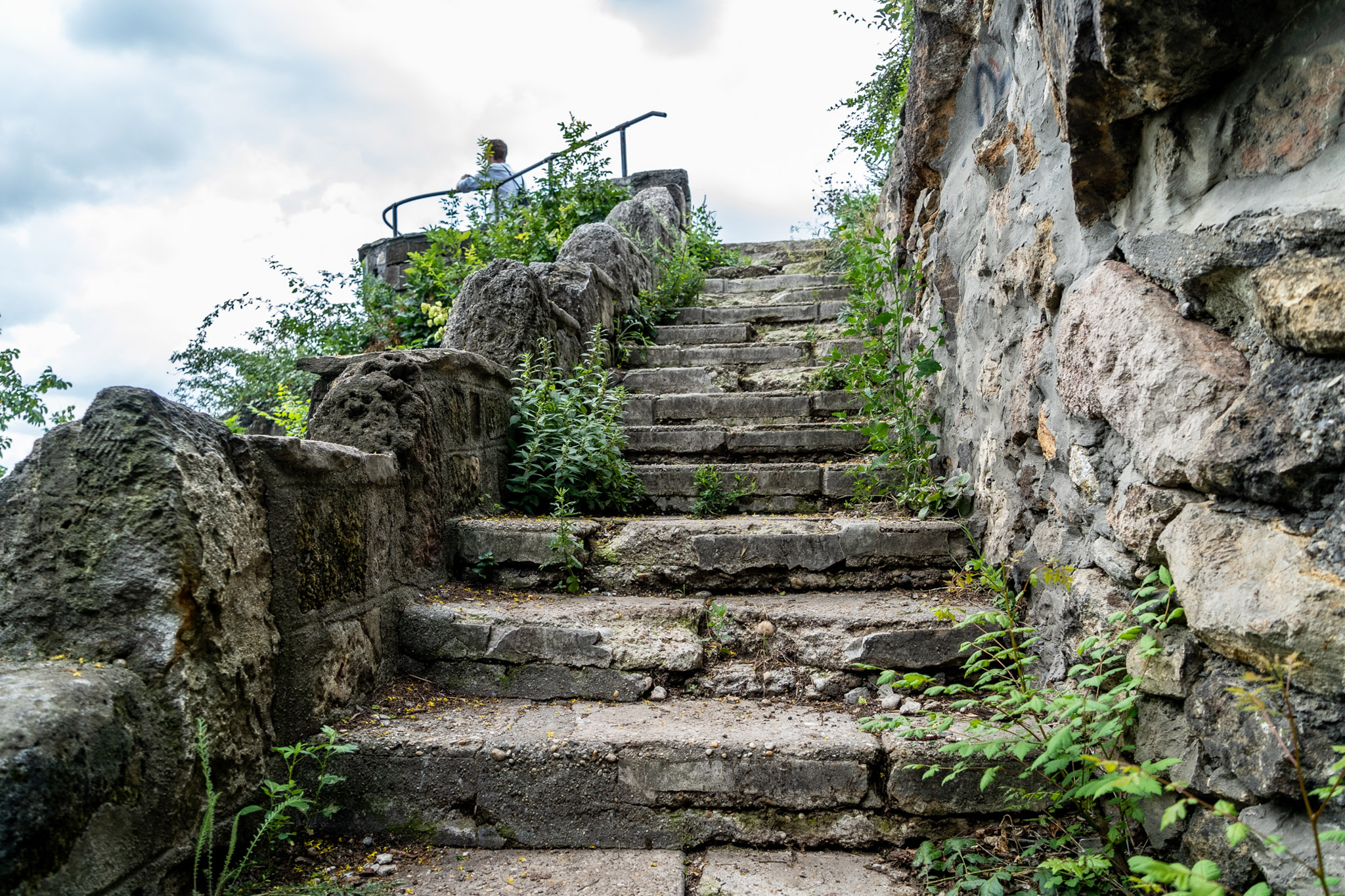
Dangerous stairs, overgrown vegetation: we can be alone in a secluded place even if the crowd is large elsewhere (Photo: Balázs Both/Pestbuda)
But in spite of its run-down nature, the panorama offers such an unparalleled experience that you can easily forget the flaws of Gellert Hill. Climbing the hill, more and more people start taking photos from the lookout terraces next to the paths and marvelling at Budapest's world heritage view. It's hard to get bored of the view. Church towers protruding from the forest of roofs: Saint Stephen's Basilica, the Inner-City Mother Church of Our Lady of the Assumption of the Church on Ferenciek Square. Unique roof structures such as the Anker Palace or the Museum of Applied Arts also guide the eye.
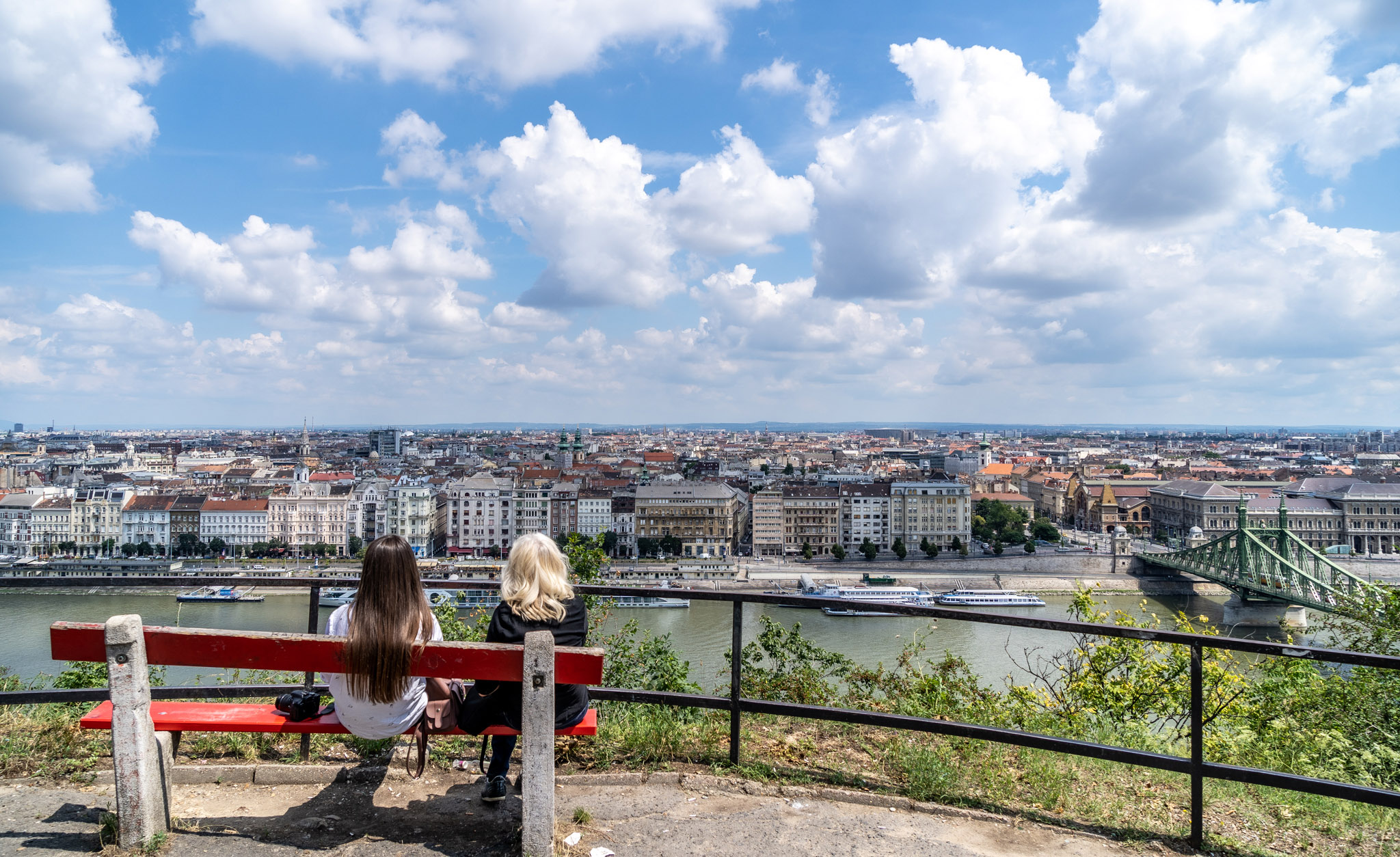 Who recognizes more buildings? (Photo: Balázs Both/Pestbuda)
Who recognizes more buildings? (Photo: Balázs Both/Pestbuda)
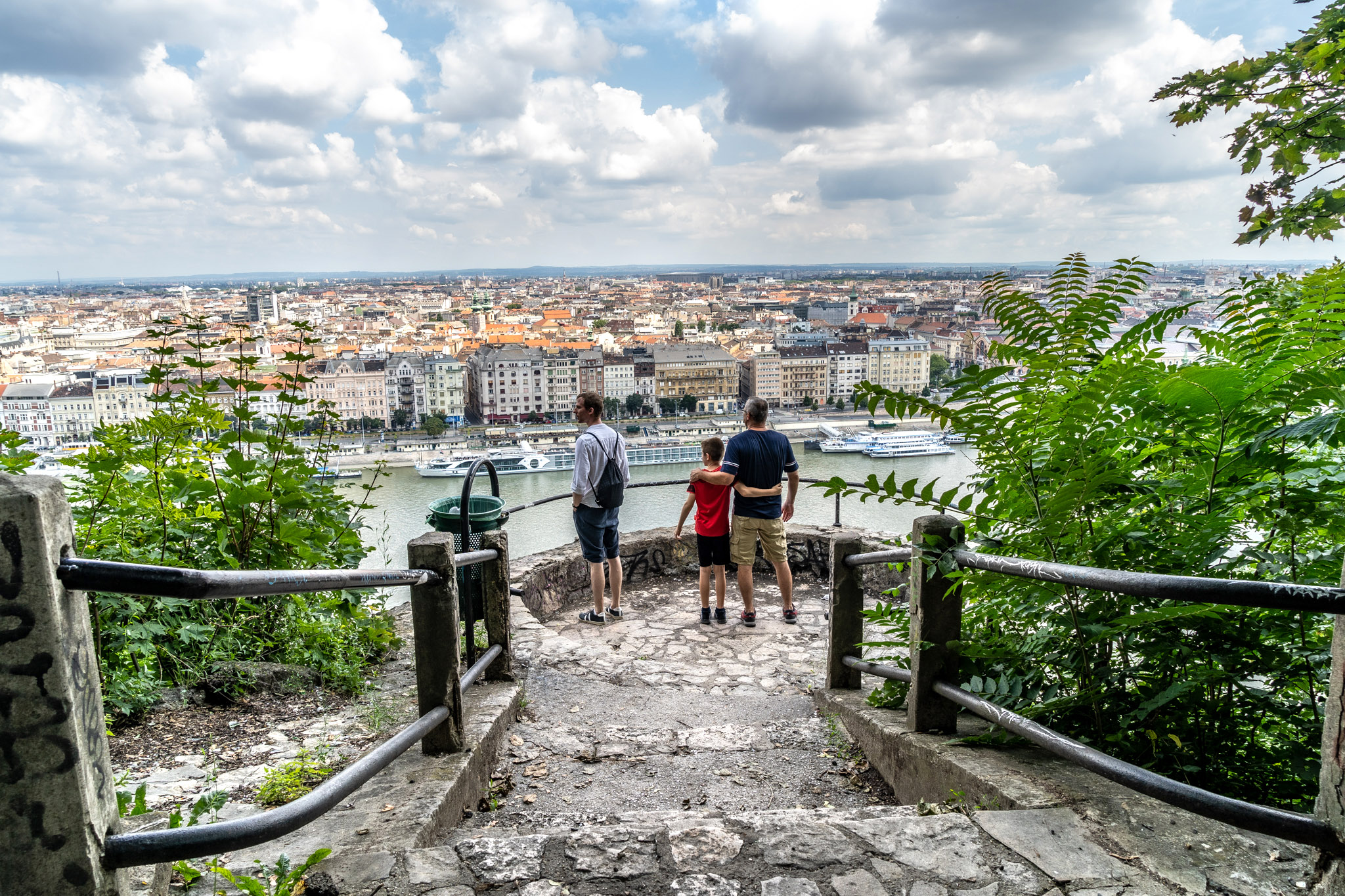
The view can be admired for hours (Photo: Balázs Both/Pestbuda)
Reaching the summit
Then, we remember where we are headed and continue our climb to the Statue of Liberty, next to the Citadel. This is the main attraction of Gellert Hill.
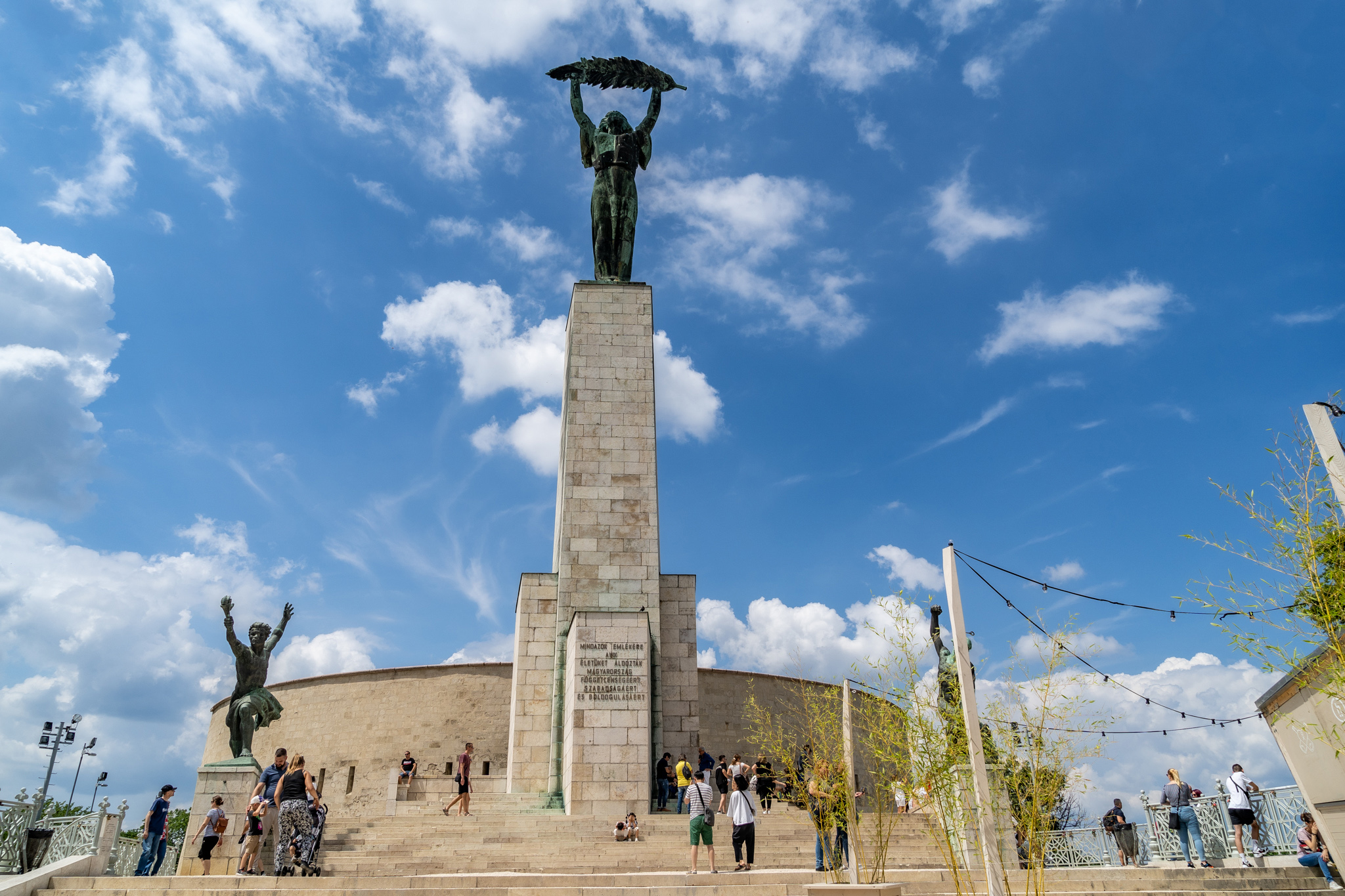
The main attraction of Gellert Hill and a symbol of Budapest is the Statue of Liberty by Zsigmond Kisfaludi Strobl, erected in 1947 (Photo: Balázs Both/Pestbuda)
The summit is full of people, most of them taking photos or shooting short videos for social media. Others relax and enjoy the view. There is not much shade at the top of the hill, just as there is no water or anything else that could provide refreshment. But that will soon change, as the Citadel will be renovated in the foreseeable future.
 Renovation is coming (Photo: Balázs Both/Pestbuda)
Renovation is coming (Photo: Balázs Both/Pestbuda)
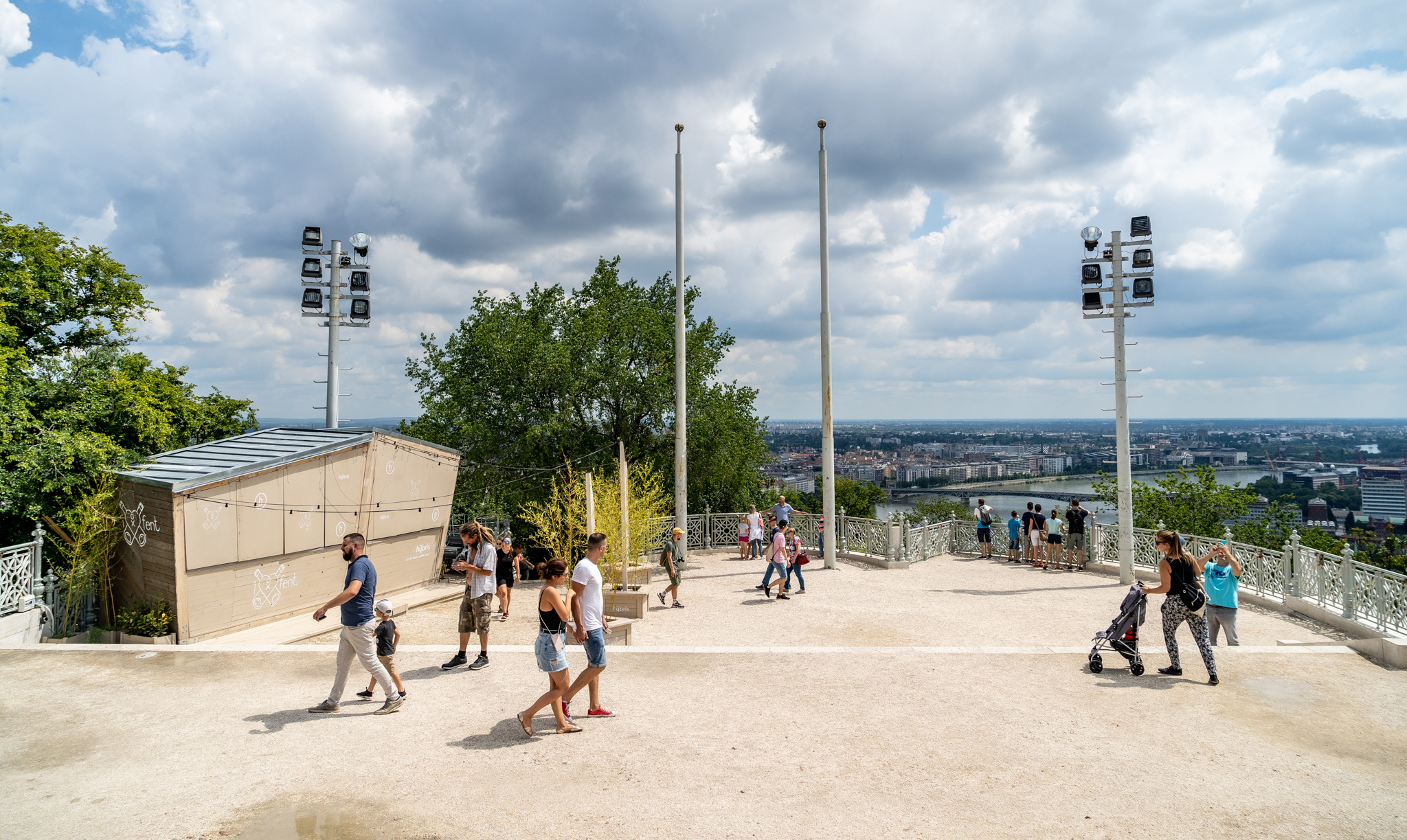
People always visit the terrace in front of the statue, but shade, water and food are nowhere to be seen. This should change with the renovation of the Citadel (Photo: Balázs Both/Pestbuda)
At present, however, apart from the Statue of Liberty by Zsigmond Kisfaludi Strobl, and the military fortification built by the Habsburgs between 1851 and 1854, there are only two ever-empty flagpoles, some bamboo trees and an endlessly growing number of love locks. And the view, of course. The panorama over Budapest is worth the effort, for which hundreds of thousands climb the 235 metres of Gellert Hill every year.
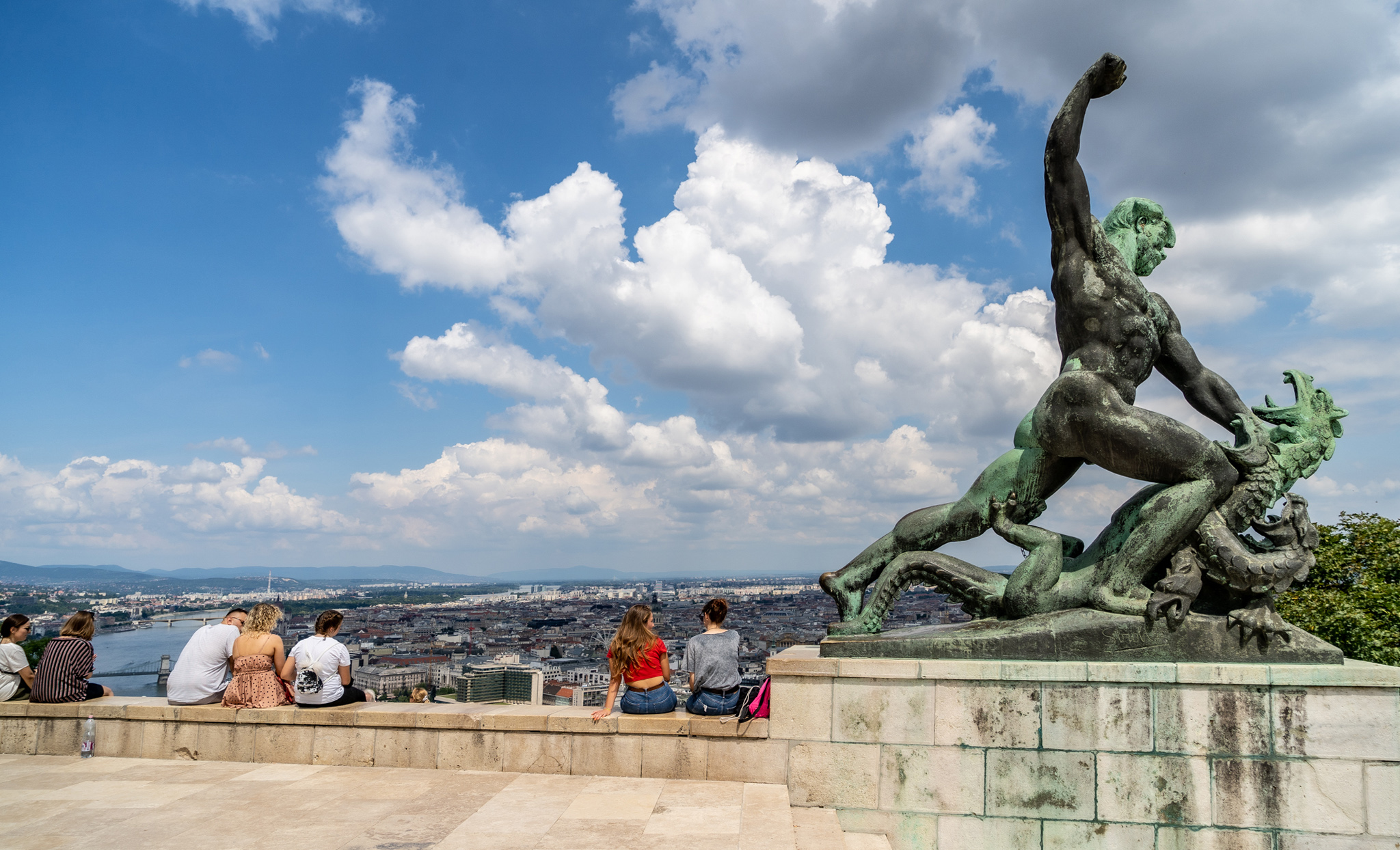
The view that makes the climb worthwhile (Photo: Balázs Both/Pestbuda)
After the view – the only way forward is down. We head north towards the Citadel Terrace, where we stop for a minute to refresh ourselves from two (out of three) of the working drinking fountains and then head down the hillside. Soon we reach the statue of Saint Gerard, which offers a very interesting perspective when viewed from behind. This must have been the view of the groups that, presumably on nights out, “forgot” their empty wine, cider and vodka bottles.
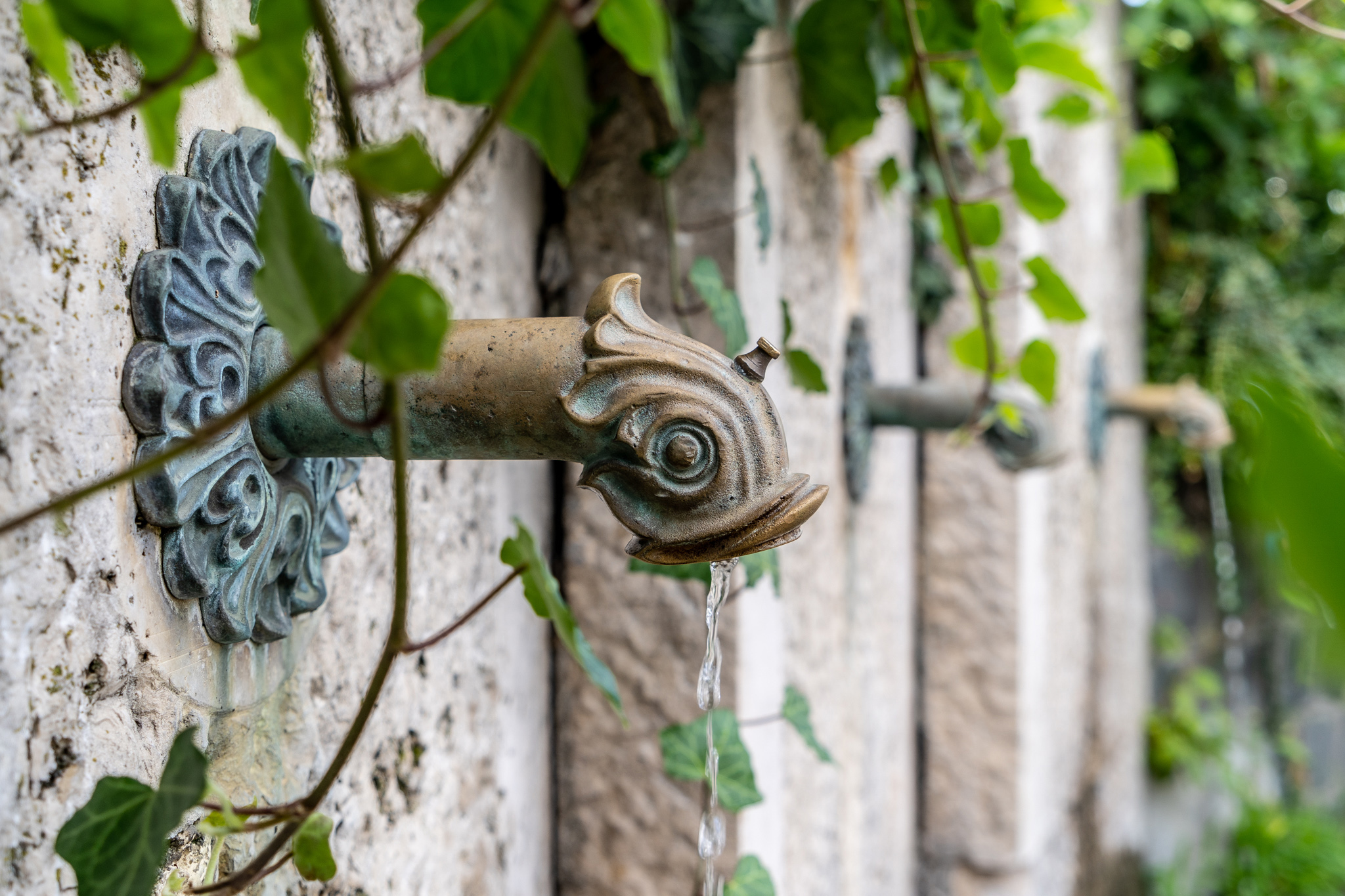 Many people refresh themselves at the artistic but barely flowing drinking fountains (Photo: Balázs Both/Pestbuda)
Many people refresh themselves at the artistic but barely flowing drinking fountains (Photo: Balázs Both/Pestbuda)
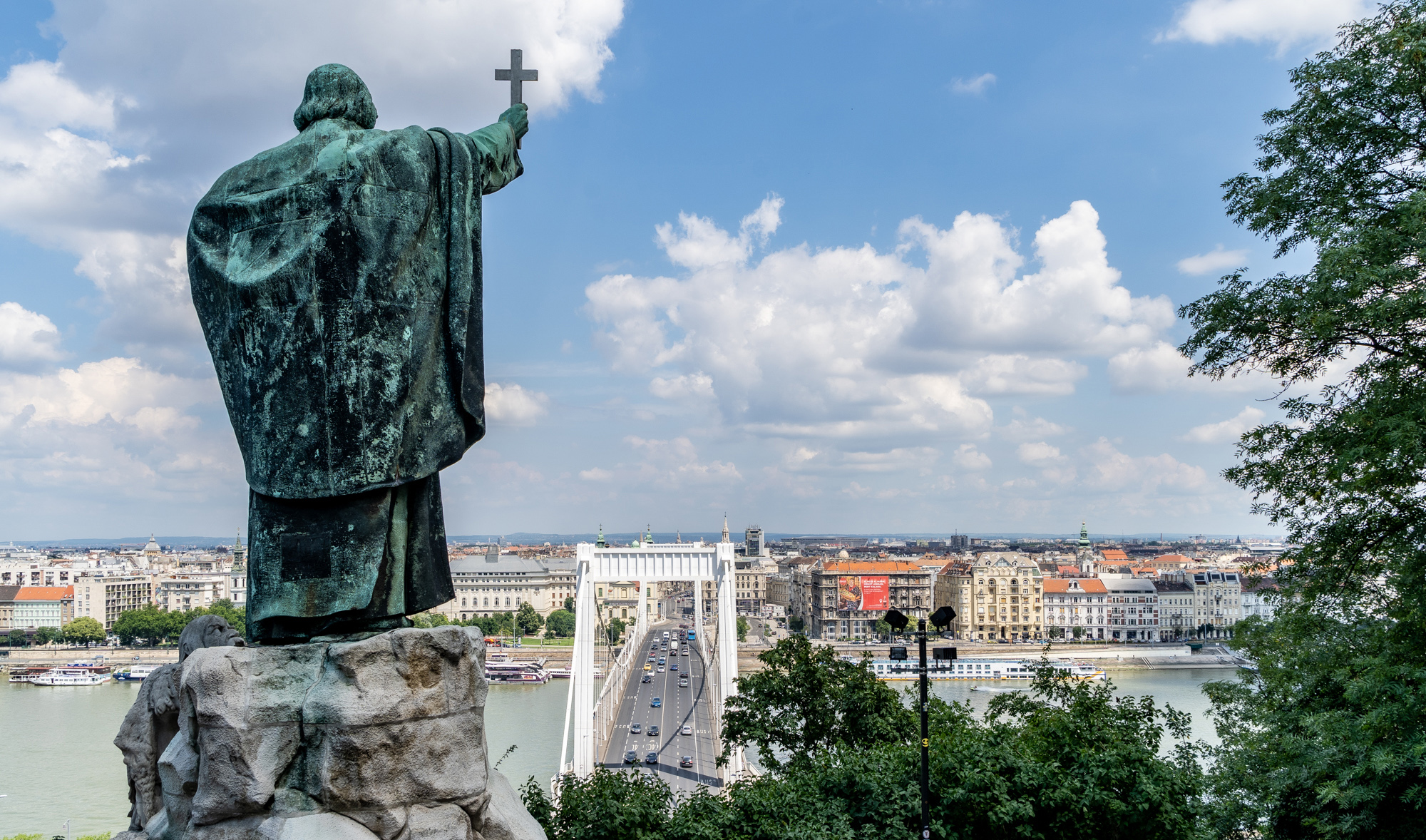
Panorama of Pest from behind the statue of Saint Gerard. Turning around, empty bottles are everywhere (Photo: Balázs Both/Pestbuda)
Stepping down the stairs built at the turn of the previous century, we pass the waterfall. From here, the rusty pipes above and the rubbish thrown into the water are clearly visible. From below, however, it is beautiful and sprinkles its surroundings with fresh, humid air: many people take photos.
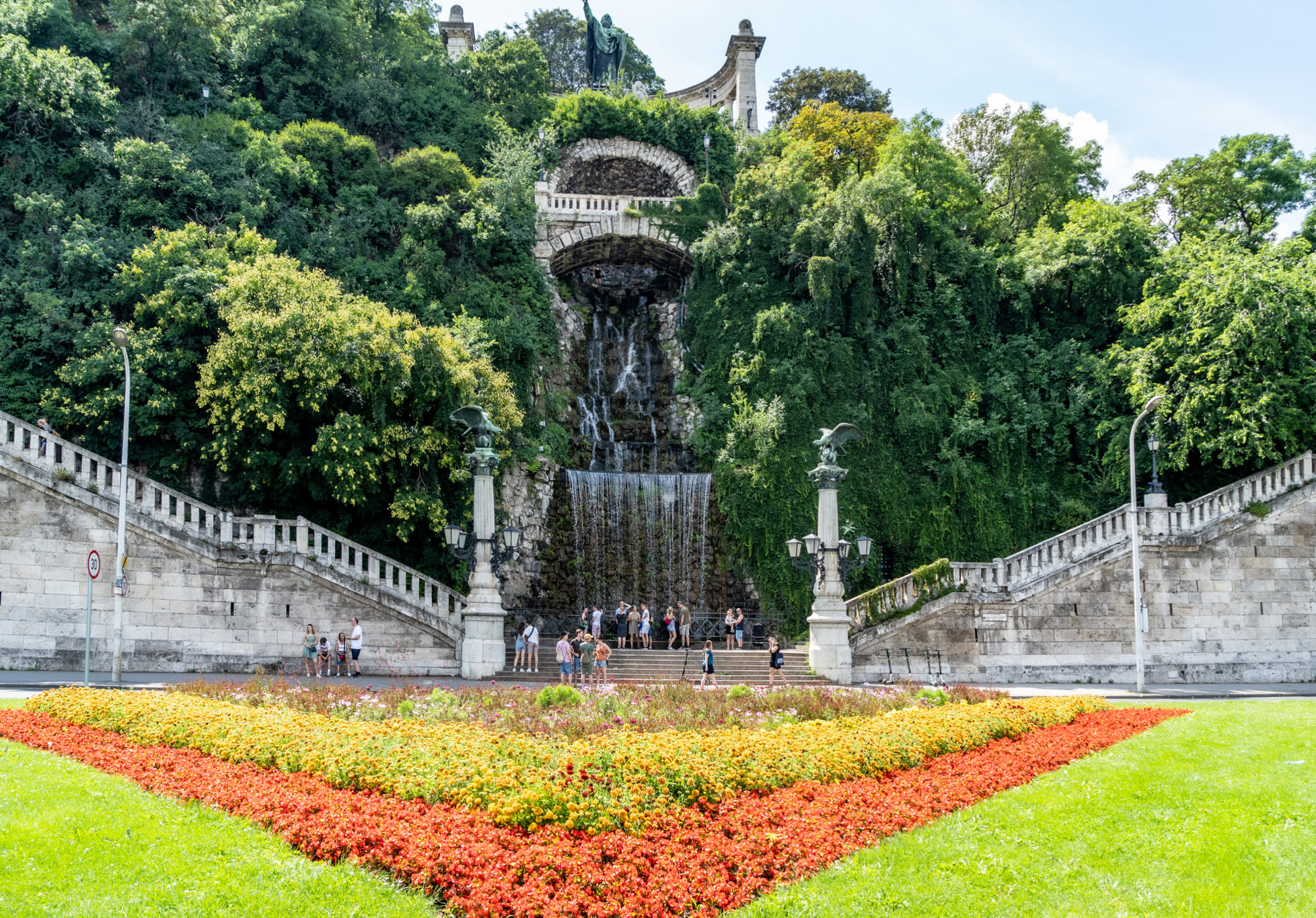 Beautiful from below: refreshing, fresh water spray, well-groomed flowers, lawn (Photo: Balázs Both/Pestbuda)
Beautiful from below: refreshing, fresh water spray, well-groomed flowers, lawn (Photo: Balázs Both/Pestbuda)
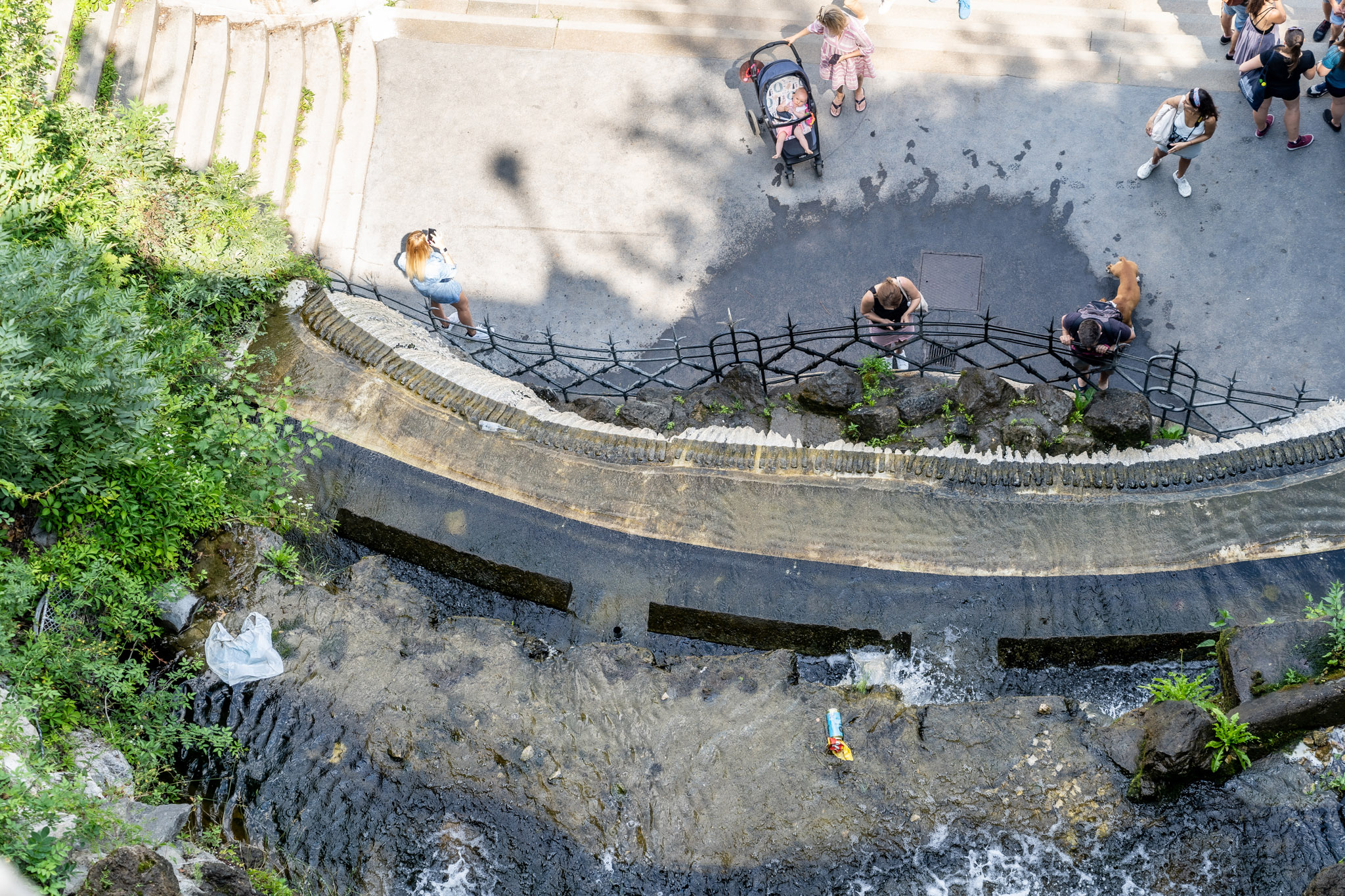
But it is enough to climb up a few steps to see the "obstacles" the water must push through (Photo: Balázs Both/Pestbuda)
Arriving at the bottom of the stairs, we look back at one of the symbols of Budapest. From below, the graffiti and rubbish cannot be seen. Only rocks rise from between the trees and lush vegetation, covering up the damage. This is a kind gesture from the historic hill: it heroically tolerates rubbish and neglect, and only shows its more beautiful face towards the city so that we can admire it every day. We should take better care of it.

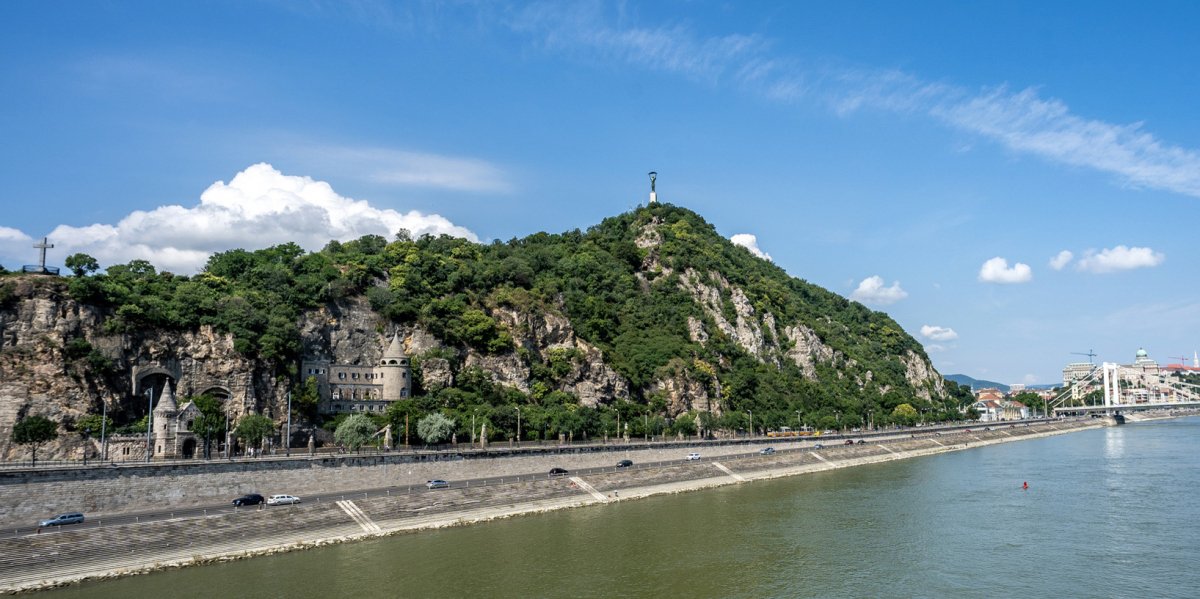



































Hozzászólások
Log in or register to comment!
Login Registration